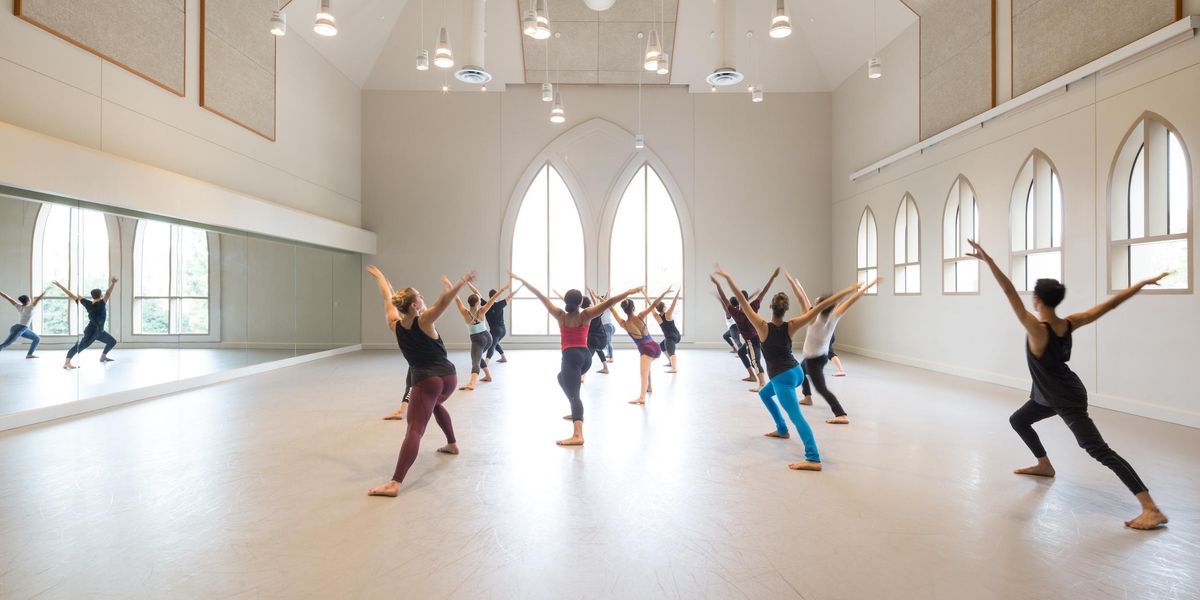Working Out With Chelsy Meiss
Meiss builds explosive power by jumping on and off a 24-inch box. Photo by Sian Richards, Courtesy NBOC.
As a student, Chelsy Meiss was told that to become a professional ballet dancer, she should never lift weights. “ ‘No one likes an overly muscular ballerina,’ ” she says, repeating a common refrain. After joining the National Ballet of Canada in 2008, however, Meiss injured her ankle and the recommended rehabilitation program involved weight lifting to build strength, stamina and explosive power. Initially, she had her doubts. “It was a little daunting—ballerinas usually don’t lift anything heavier than themselves,” she says. “I really had no idea what I was getting into, and I didn’t think I would like it.”
Yet, after a few sessions with personal trainer Freyja Spence at Toronto’s Fortis Fitness, surrounded by guys in sweat-stained shorts and hard rock radio echoing off the industrial-strength equipment, Meiss quickly became a convert.
Standing 5′ 6″ and weighing a lithe 111 pounds, today the 28-year-old second soloist deadlifts 140 pounds. She also sweats through 95-pound front squats, 24-inch box jumps and one-arm dumbbell lunges—often executed consecutively as part of an intense circuit training program known as Tabata. It’s a killer workout that leaves Meiss utterly spent but also renewed. “I could see very quickly that weight training really improved my allégro, my jumps, my explosive and powerful movements, without changing my balletic line,” Meiss says. “Ballet dancers, especially female ones, are concerned that lifting weights will bulk them up. But that has not been my experience at all.”
What it has done instead is give her a noticeable edge. Visiting choreographers like Alexei Ratmansky, John Neumeier, Christopher Wheeldon and Marco Goecke have recently hand-picked Meiss to dance leading roles in their ballets. “Staff and colleagues have noticed a positive change in me and some are now going for weight training themselves,” Meiss adds. “They see the benefits, and are now willing to get past the stigma that lifting heavy weights is bad for a ballerina.”
Ready to Pump Some Iron?
Always lift weights with a trainer or a spotter who can recommend the proper resistance-training methods for your body type while also assessing your technique and gradually increasing the intensity over time. Here’s Meiss’ routine:
1. Warm up first.
Meiss starts her gym workouts by standing in parallel, one leg lifted to the side at a 45-degree angle. She then traces a series of small circles in the air with the toe of the working leg extending back behind the body in a low arabesque. This fires the gluteal muscles and warms up the hips.
2. Kettle bell swings.
Squatting in a parallel second position with the glutes sticking back and toes pointing slightly outwards, let the kettle bell hang down between your legs. Then thrust the weight up to chest level using the buttocks, not the arms, for momentum. Repeat 15 to 20 times. Meiss, who uses a 35-pound kettle bell, swears this exercise is made for women on pointe: “It lifts the hips and prevents the feet from sinking into the shoes.”
3. Box jumps.
Find a sturdy object with a height you can safely jump on and off of. Start with feet parallel, hips-width apart, and then plié in front of the box. Jump up on and then off the box, landing with your core braced and stepping back before beginning the sequence over again. Repeat up to five times. Meiss finds this builds stamina and power for jumps.
4. Dumbbell lunges. Hold a dumbbell in one hand (Meiss uses a 20-pound weight) and lunge forward, alternating legs for a total of 10 lunges on each before shifting the weight to the opposite hand. Keep the core lifted and knee straight over the foot. “You should be lunging deep enough so that the back knee lightly touches the ground,” says Meiss. This strengthens the hips and lengthens the psoas muscles.
TIP:
When lifting heavy weights, chalk is like rosin for the hands: It helps your grip and ensures that the weight doesn’t slide when you get tired.




